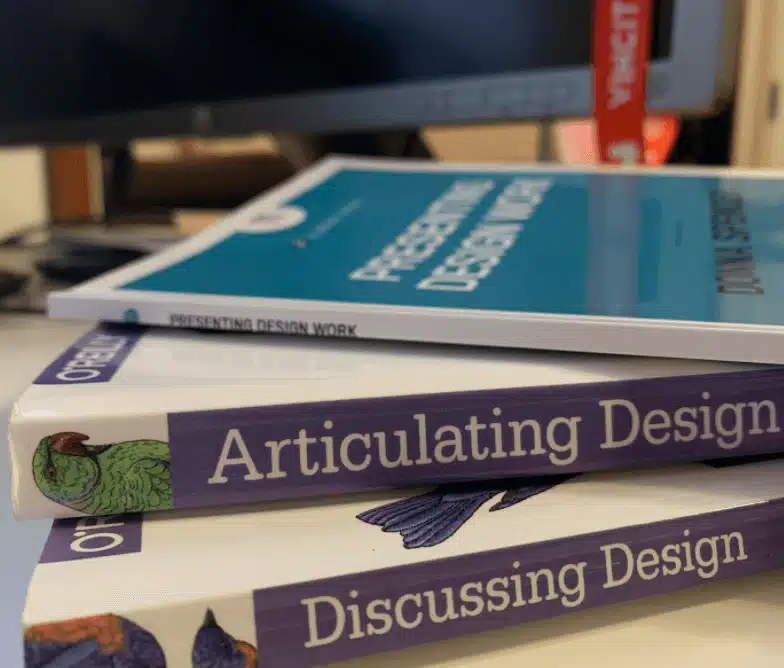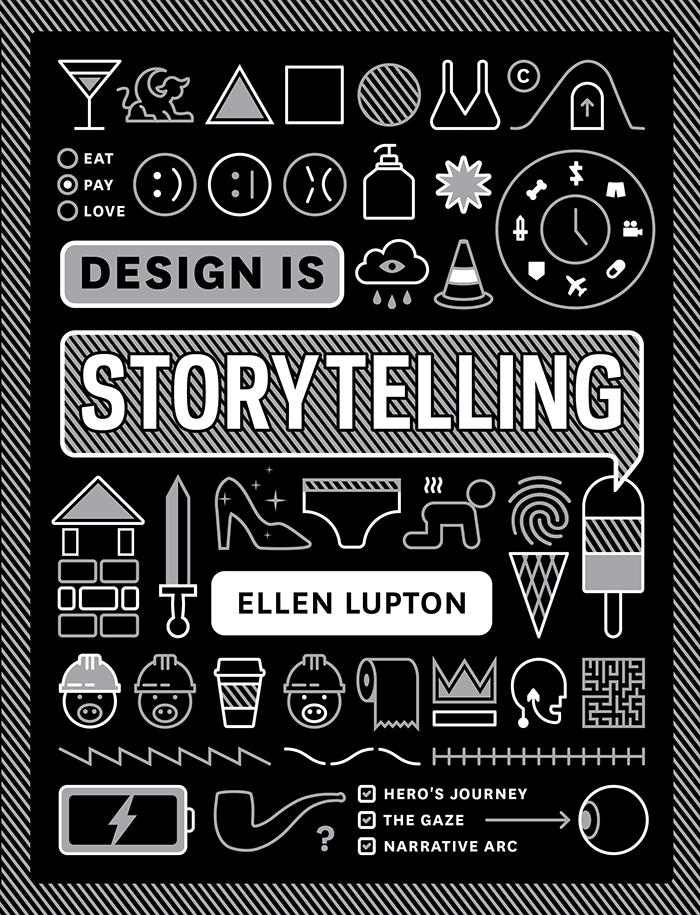
💡 Articulating, defending ideas, and presenting design solutions: one of the most important skills for designers!
Recently, I read the book Presenting Design Work by Donna Spencer, and it gave me valuable insights into the crucial role that presenting plays in our work as designers. It reminded me of a conversation I had with a designer on my team, where I said something that stuck: ✨ “Your work doesn’t speak for itself” – you need to know how to “sell it.”
This phrase sums up one of the biggest challenges and opportunities for us as design professionals. It’s not enough to create something visually appealing or functional; we need to ensure that people understand, trust, and are excited about the value we’re delivering.
Communicate your vision and get better project results every time.
Do you love doing design work but dread the inevitable reviews that follow? Dread no more! Donna Spencer provides us with a blueprint for a successful design presentation—one that conveys confidence, communicates your vision, and results in frustration-free, usable feedback. Filled with real-world expertise, Presenting Design Work will transform how you share your work with clients, colleagues, and stakeholders, consistently leading to better project results.
It’s not just about showing what we’ve done. It’s about inviting others into the process. Collaboration, active listening, and engagement are key elements to gaining the trust and support of stakeholders and the team. When we effectively present our ideas, we facilitate alignment and give everyone the chance to participate and influence the success of the product.
Some Key Insights I Took From the Book:
📌 Presenting design work isn’t about you: A designer’s main responsibility is to help others make well-informed decisions. The design belongs to the team, and often, the final decision isn’t ours to make. Our role is to facilitate the process and engage everyone involved.
🌟 Storytelling makes all the difference: Instead of just presenting screens or features, presenting a scenario in which a user solves a problem with the design makes the process much more engaging. This helps connect people to the business goals and real user needs.
🤝 Collaboration and humility are essential: Receiving feedback can be challenging, but it’s crucial for improving the design. The more we involve stakeholders from the beginning, the easier it is to align expectations and avoid surprises at the end. As Spencer puts it, “Design presentations are about discussions and decisions.”
🎯 Focus on the outcome: Many designers feel they need to explain every detail of their process to prove their value. However, as Donna Spencer highlights, the value lies in the final result—in how well the solution meets needs and solves problems. This outcome is what validates our work.
🗣️ Getting high-quality feedback: To guide the feedback and ensure it’s useful, we need to be specific when asking for it. Don’t ask “Do you like it?” Instead, ask whether the design meets user needs, if the message is clear, or if there is anything that could be improved to ensure a better experience.
This book explores:
- Why presentations go wrong and what can make them go right
- The value of presenting design work and how to choose the right format
- Preparing your audience for a successful—and enjoyable—design review
- How to craft a compelling presentation and ace the logistics
- Creating an effective and efficient feedback loop between you and your stakeholders
Presenting design effectively isn’t just a showcase of the work we’ve done, but a crucial moment for connection and alignment. This is how we ensure that the final product is successful and meets its intended goals.
What strategies do you use to present your design solutions clearly and engagingly?
Further Reading Suggestions
If you enjoyed Presenting Design Work, you might be interested in other related reads about design and presenting ideas:

Design Is Storytelling
by Ellen Lupton
Good design, like good storytelling, brings ideas to life. But do designers fully understand the narrative mechanisms that give life to our creations? Are we perhaps already using some of these mechanisms without even knowing it? What other techniques can storytelling tools offer to make the outcome of our work speak directly to the hearts of our users? This book is a manual precisely about these resources and strategies, teaching you how to apply narrative techniques to create graphics, products, services, and experiences.

Articulating Design Decisions: Talk to Stakeholders, Keep Your Sanity, and Deliver the Best User Experience
by Tom Greever
Talking to people about your designs might seem like a basic skill, but it can be a difficult task to do well. In many cases, how you communicate with stakeholders, clients, and others who are not designers might be more important than the designs themselves. If you cannot get the support of these people, your work will never see the light of day—no matter how good it is. This practical guide focuses on principles, tactics, and methods for presenting your designs. Whether you’re designing apps, websites, or products, you’ll learn to get the support of key influencers to provide the best possible user experience.
Recommended Articles:
- 4 Questions to Ask Yourself Before Presenting Designs
- How To Present Design Work Like A Pro
- 8 Tips on Presenting Design Work to Clients
- 7 Mistakes When Presenting Design Work and Asking for Critique
These resources provide a deeper understanding of how to improve your presentation skills and achieve positive outcomes for your projects. Reading these books and articles will help you feel more confident in communicating your ideas and ensure you gain the support needed to bring your designs to life.